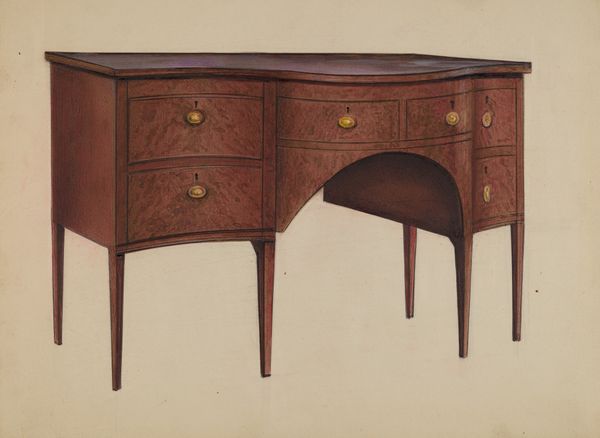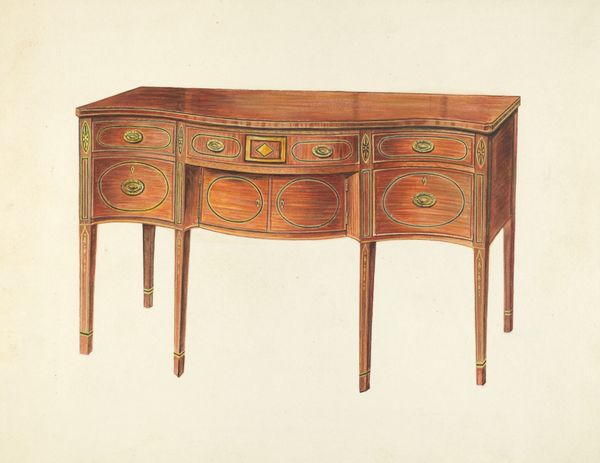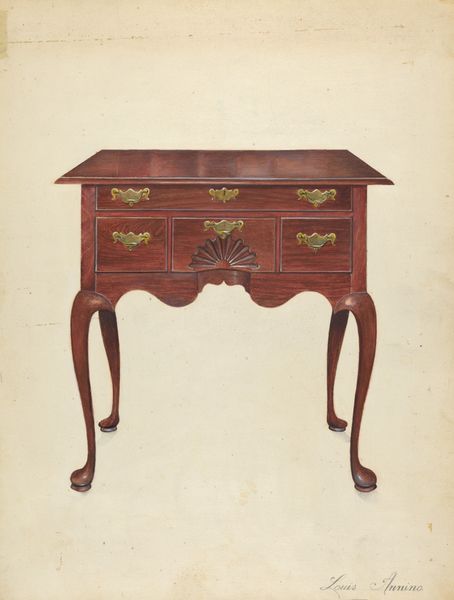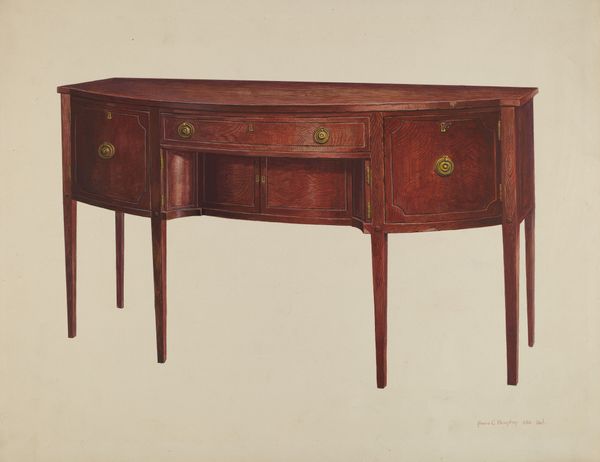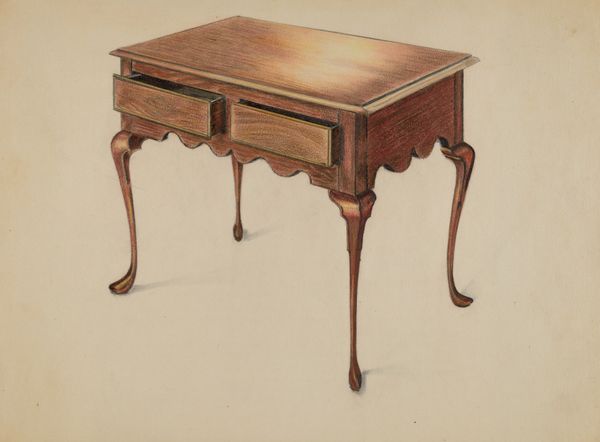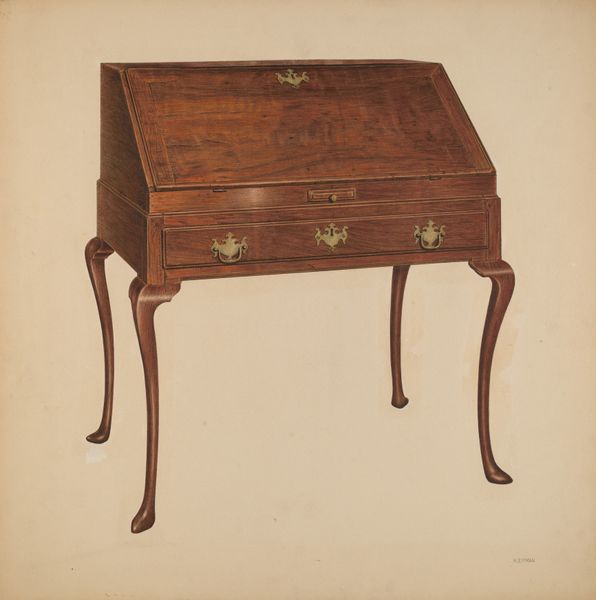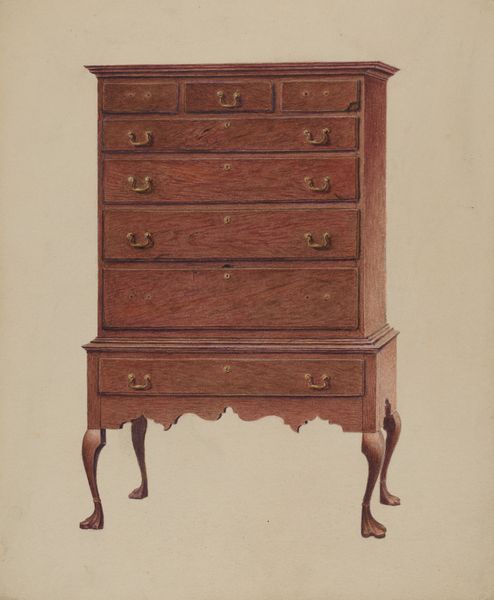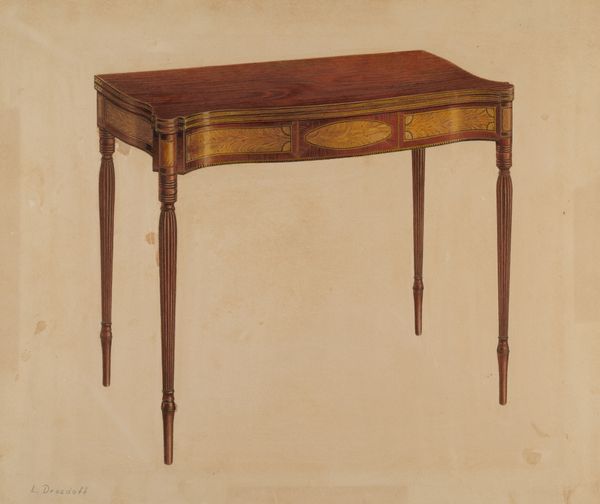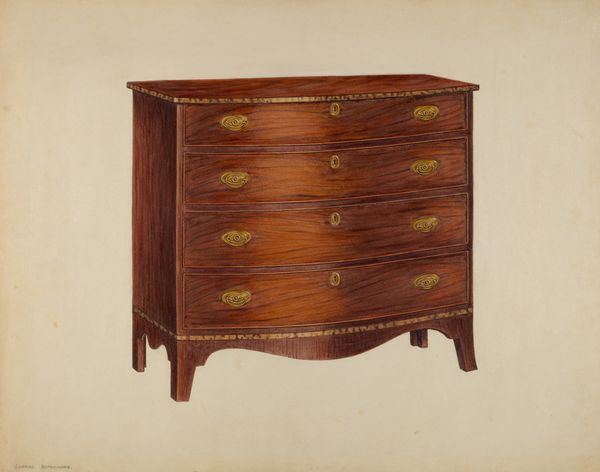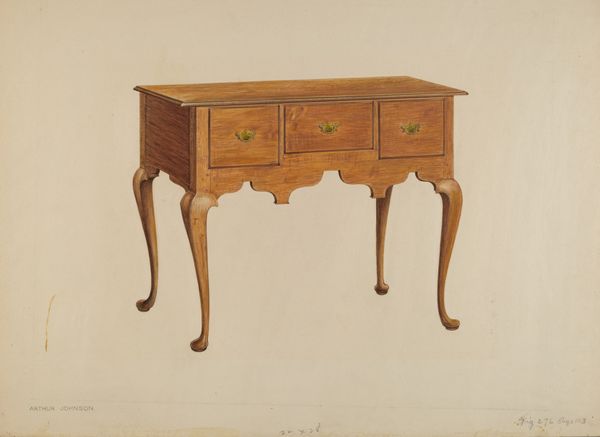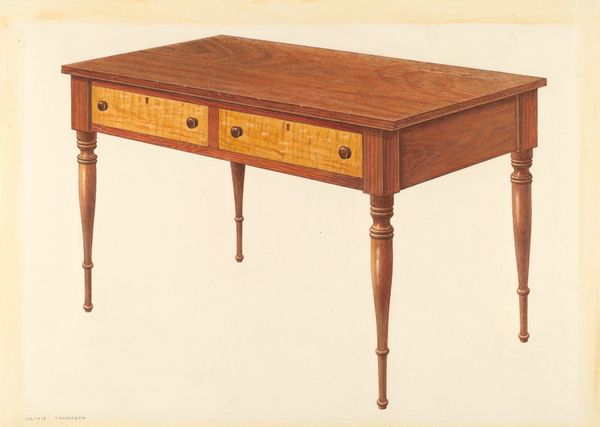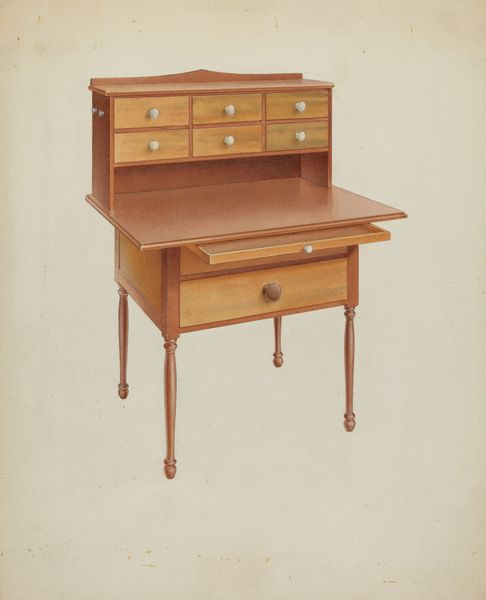
drawing, paper, pencil
#
drawing
#
paper
#
pencil
#
academic-art
#
decorative-art
#
realism
Dimensions: overall: 23 x 29.5 cm (9 1/16 x 11 5/8 in.)
Copyright: National Gallery of Art: CC0 1.0
Editor: So, here we have "Sideboard," a drawing by Harry Eisman from around 1953, made with pencil and paper. It's such a detailed and precise rendering. What immediately strikes me is how the design hints at both tradition and a restrained modern aesthetic. What's your take on this piece? Curator: It's fascinating how this design occupies a specific historical space, isn't it? The design clearly references historical styles—federal perhaps or neoclassical—yet filters them through a mid-century modern lens. What does it tell us about the designer’s relationship with historical precedent? Were they constrained by tradition, or intentionally invoking it for a specific audience? Editor: That's an interesting point! The use of clean lines suggests a move toward modernism, but the decorative details—those circular motifs and the contrasting wood grains—feel more rooted in traditional craftsmanship. Does that tell us about its potential market and cultural influences? Curator: Exactly! This tension between modernity and tradition reflects broader societal shifts in the post-war period. Think about the rise of consumer culture and suburban living. Furniture like this aimed at an aspirational middle class. What design elements do you think spoke to that audience, beyond its stylistic choices? Editor: Well, it seems practical. Lots of storage! And it has a sense of elegance that would elevate a dining room. It feels aspirational. Seeing the history embedded into the art itself definitely reframes my understanding of it! Curator: Indeed. And by looking at design drawings like this, we can see how mass production and democratization impacted the marketplace. And the push and pull of "high" and "low" cultures continues.
Comments
No comments
Be the first to comment and join the conversation on the ultimate creative platform.
